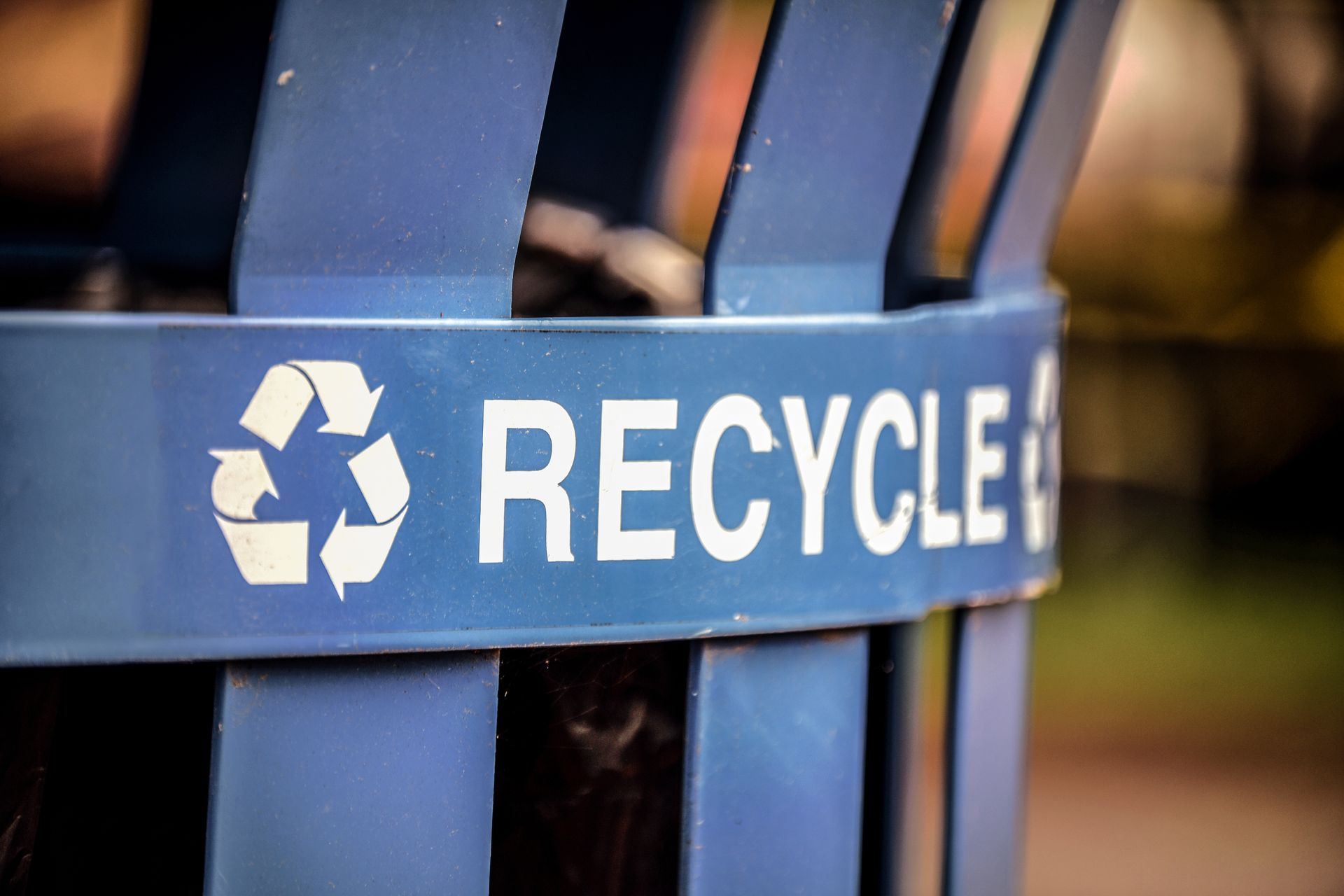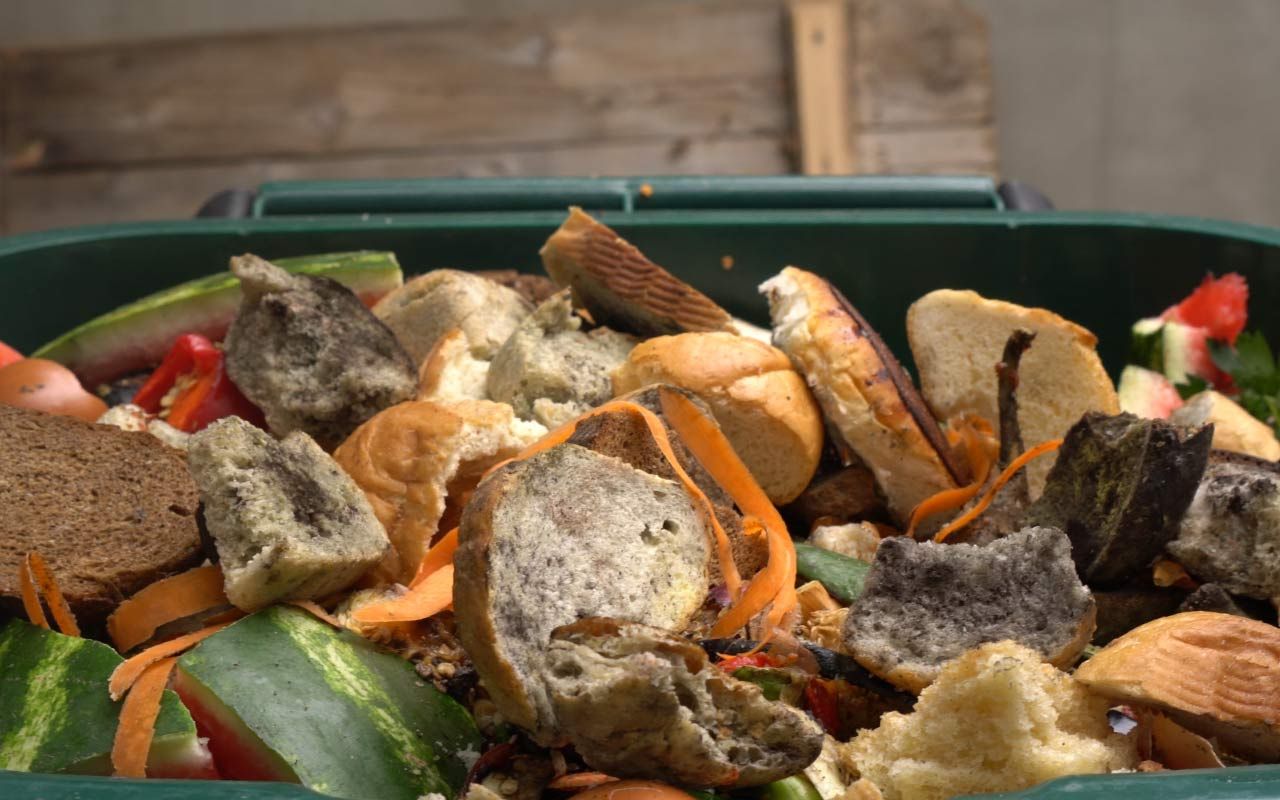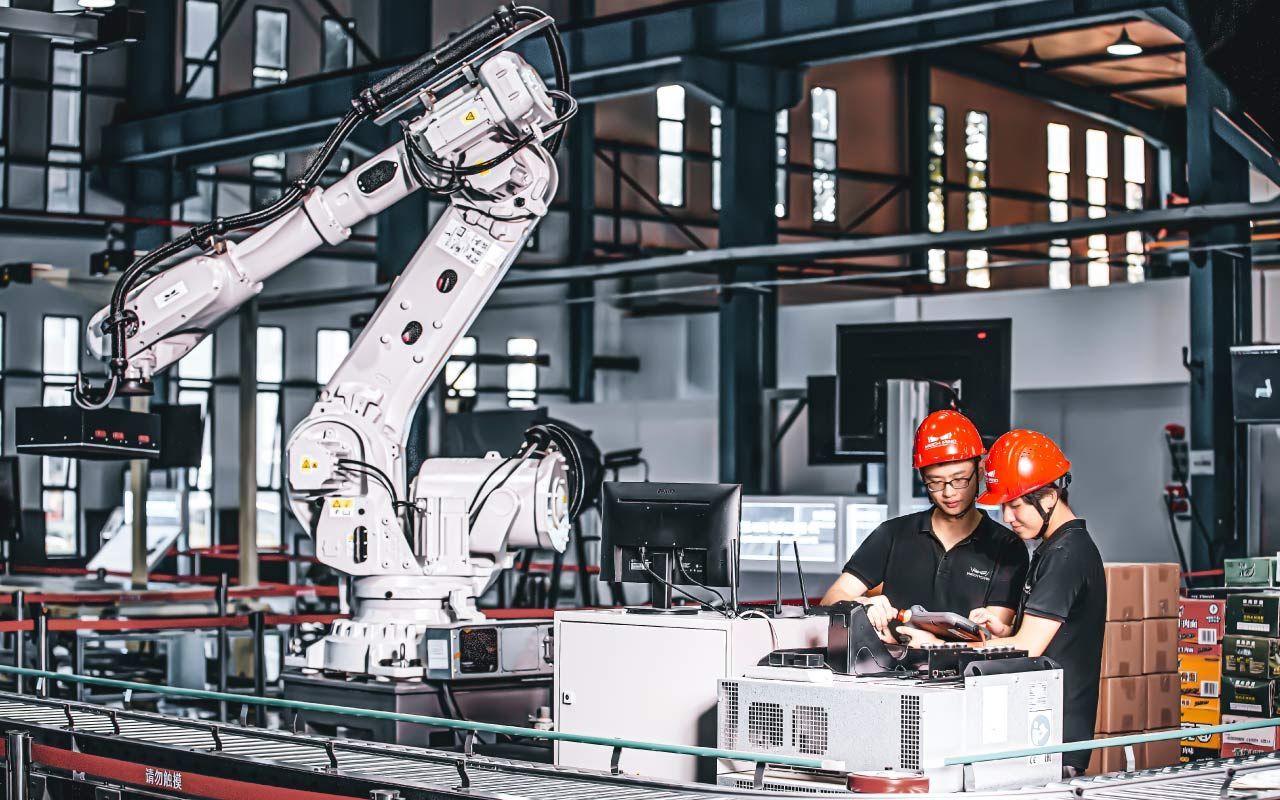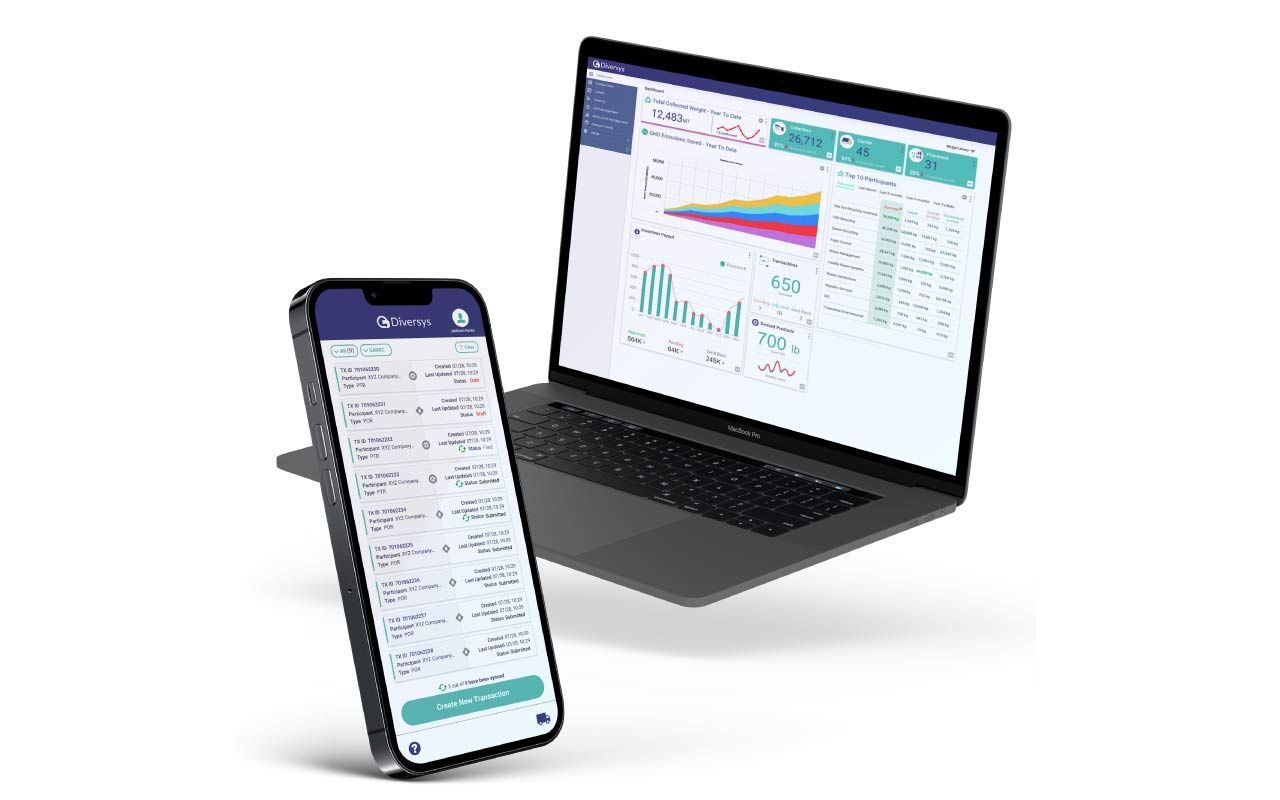Blog
Add your custom HTML here
Welcome to Insights

By Bridget Vandenbosch
•
August 12, 2023
In the heart of every transformative endeavour lies a story of innovation and progressive thinking. Around the globe, the push towards a more sustainable future is gaining momentum. A potent catalyst in this transformation is the rise of Extended Producer Responsibility (EPR) programs. Nova Scotia, a province deeply committed to sustainable initiatives, finds its narrative enriched by the newly announced Extended Producer Responsibility (EPR) programs. It’s a significant step toward reducing waste and promoting resource recovery from packaging, paper products, lamps, batteries, and small household electric appliances. EPR is reshaping product designs and promoting a culture of recycling. Nova Scotia is just one example in a global movement of continued expansion of EPR programs and initiatives. When it comes to driving greater environmental outcomes in resource recovery, it's essential to recognize that while EPR is the compass, the meticulous tracking of resource recovery via advanced recycling software is the engine propelling sustainability. Leveraged effectively, data can refine methodologies, augment environmental stewardship, and create lasting changes that have tangible impacts on our planet. Understanding the intricacies of waste management and recycling becomes infinitely more actionable with precise data.
Welcome to Insights

By Bridget Vandenbosch
•
August 12, 2023
In the heart of every transformative endeavour lies a story of innovation and progressive thinking. Around the globe, the push towards a more sustainable future is gaining momentum. A potent catalyst in this transformation is the rise of Extended Producer Responsibility (EPR) programs. Nova Scotia, a province deeply committed to sustainable initiatives, finds its narrative enriched by the newly announced Extended Producer Responsibility (EPR) programs. It’s a significant step toward reducing waste and promoting resource recovery from packaging, paper products, lamps, batteries, and small household electric appliances. EPR is reshaping product designs and promoting a culture of recycling. Nova Scotia is just one example in a global movement of continued expansion of EPR programs and initiatives. When it comes to driving greater environmental outcomes in resource recovery, it's essential to recognize that while EPR is the compass, the meticulous tracking of resource recovery via advanced recycling software is the engine propelling sustainability. Leveraged effectively, data can refine methodologies, augment environmental stewardship, and create lasting changes that have tangible impacts on our planet. Understanding the intricacies of waste management and recycling becomes infinitely more actionable with precise data.
Welcome to Insights

By Bridget Vandenbosch
•
August 12, 2023
In the heart of every transformative endeavour lies a story of innovation and progressive thinking. Around the globe, the push towards a more sustainable future is gaining momentum. A potent catalyst in this transformation is the rise of Extended Producer Responsibility (EPR) programs. Nova Scotia, a province deeply committed to sustainable initiatives, finds its narrative enriched by the newly announced Extended Producer Responsibility (EPR) programs. It’s a significant step toward reducing waste and promoting resource recovery from packaging, paper products, lamps, batteries, and small household electric appliances. EPR is reshaping product designs and promoting a culture of recycling. Nova Scotia is just one example in a global movement of continued expansion of EPR programs and initiatives. When it comes to driving greater environmental outcomes in resource recovery, it's essential to recognize that while EPR is the compass, the meticulous tracking of resource recovery via advanced recycling software is the engine propelling sustainability. Leveraged effectively, data can refine methodologies, augment environmental stewardship, and create lasting changes that have tangible impacts on our planet. Understanding the intricacies of waste management and recycling becomes infinitely more actionable with precise data.
Latest Articles

By Bridget Vandenbosch
•
August 12, 2023
In the heart of every transformative endeavour lies a story of innovation and progressive thinking. Around the globe, the push towards a more sustainable future is gaining momentum. A potent catalyst in this transformation is the rise of Extended Producer Responsibility (EPR) programs. Nova Scotia, a province deeply committed to sustainable initiatives, finds its narrative enriched by the newly announced Extended Producer Responsibility (EPR) programs. It’s a significant step toward reducing waste and promoting resource recovery from packaging, paper products, lamps, batteries, and small household electric appliances. EPR is reshaping product designs and promoting a culture of recycling. Nova Scotia is just one example in a global movement of continued expansion of EPR programs and initiatives. When it comes to driving greater environmental outcomes in resource recovery, it's essential to recognize that while EPR is the compass, the meticulous tracking of resource recovery via advanced recycling software is the engine propelling sustainability. Leveraged effectively, data can refine methodologies, augment environmental stewardship, and create lasting changes that have tangible impacts on our planet. Understanding the intricacies of waste management and recycling becomes infinitely more actionable with precise data.

By Bridget Vandenbosch
•
July 17, 2023
Ever pictured a world where your best shirt doesn't just look good, but it does good for our planet too? Well, some big players in the US clothing scene are working to make that happen. A new law in the works called the Responsible Textile Recovery Act (SB707) could shake up how the fashion industry deals with waste over the next few years. This law could set the tone for all future rules about waste and recycling in the US textile industry. It's all about using data and sustainable practices to make a change. This is the first time a law like this has been proposed nationally. So why do we need this law in the clothing and textile industry, and what part does data play in it? Clothes and textiles make up a whole lot of waste worldwide. According to the US EPA, the United States alone throws away over 17 million tons of textiles annually . Most of this ends up in landfills or gets burned, which harms our environment and uses up our natural resources. A solid recycling law could help turn things around. This law, known as Extended Producer Responsibility (EPR) , makes companies accountable for the environmental impact of their products. From creation to disposal, they're responsible. Under EPR, companies must ensure their products are properly recycled or reused at the end of their life. While it's a step in the right direction, it's also a massive task.

By Bridget Vandenbosch
•
June 29, 2023
Debt. Yep, that's a word that can weigh you down. We've all been there, whether from investments we needed to make or those impulse buys that got the best of us. Either way, you've got to pay your dues because if you don't, that debt keeps piling up, compounding by the day. Now, imagine that same concept applied to our environment. In many ways, we've been doing the same thing with our planet's resources, chasing short-term gains while the long-term consequences keep stacking up.

By Bridget Vandenbosch
•
June 22, 2023
Lithium-ion batteries are a huge part of our lives, powering everything from the TV remote to our cellphones and electric vehicles. They’ve become the go-to choice for powering our devices because they offer a winning combination of high energy density, long-lasting performance, and compact size. But as their use grows, we face a pressing challenge: how do we ensure end-of-life batteries are properly recycled and kept out of landfills? The U.S. Environmental Protection Agency (EPA) issued a memo that could impact how processors and recyclers approach recycling end-of-life lithium-ion batteries. The memo emphasizes capturing valuable materials from lithium-ion batteries while preventing environmental harm. This won’t necessarily introduce any new regulations or rules for batteries but instead clarifies how existing universal waste and recycling rules should be applied to batteries. Taking a more sustainable approach to battery recycling is especially important with the growing interest in end-of-life lithium-ion batteries and their handling. What can recycling facilities and processors do to track battery recycling operations more efficiently and ensure their businesses align with the EPA’s stance? Understanding the EPA Memo The memo was released on May 24, 2023 , and by understanding the newly introduced guidelines and incorporating them into operations, processors can navigate the complexities of the battery recycling landscape.
Knowledge Center
Popular Subjects: Data - Digitalization - Circular Economy - EPR - Waste/Recycling operations
Featured

May 3, 2023
Food waste is a global concern and on the rise with considerable environmental and economic consequences, including for North America. Reports from ReFED and the EPA show that food waste in the U.S. has increased since 2016, hitting a concerning average of 548 pounds of extra food per person. It is okay to breathe a (temporary) sigh of relief as recent data from ReFED indicates efforts to reduce food waste started to have an impact in 2019, suggesting food waste may have peaked. The current food waste situation in the United States is filled with challenges, but it also presents opportunities to lessen waste and its effects on the environment and economy. Organizations like ReFED are at the forefront, emphasizing the importance of data and tracking to unlock insights that can drive real solutions for tackling food waste.

April 25, 2023
A circular economy aims to minimize waste, keeping resources in production and consumption supply chains for as long as possible to maximize resource efficiency. This creates an economic system that is built around reducing the prevalence of take-make-waste where products end up in landfills. The Circular Economy achieves this through a production and consumption model that centers around recycling, repurposing, reclaiming and re-using products and materials. Under a circular economy model, waste is viewed as a resource and materials are reused and recycled in a closed-loop system, reducing the need for virgin resources and minimizing negative environmental impacts. The circular economy aims to create a more sustainable and resilient economic model that is better for both people and the planet.
Useful links:
Latest Articles

By Bridget Vandenbosch
•
August 12, 2023
In the heart of every transformative endeavour lies a story of innovation and progressive thinking. Around the globe, the push towards a more sustainable future is gaining momentum. A potent catalyst in this transformation is the rise of Extended Producer Responsibility (EPR) programs. Nova Scotia, a province deeply committed to sustainable initiatives, finds its narrative enriched by the newly announced Extended Producer Responsibility (EPR) programs. It’s a significant step toward reducing waste and promoting resource recovery from packaging, paper products, lamps, batteries, and small household electric appliances. EPR is reshaping product designs and promoting a culture of recycling. Nova Scotia is just one example in a global movement of continued expansion of EPR programs and initiatives. When it comes to driving greater environmental outcomes in resource recovery, it's essential to recognize that while EPR is the compass, the meticulous tracking of resource recovery via advanced recycling software is the engine propelling sustainability. Leveraged effectively, data can refine methodologies, augment environmental stewardship, and create lasting changes that have tangible impacts on our planet. Understanding the intricacies of waste management and recycling becomes infinitely more actionable with precise data.

By Bridget Vandenbosch
•
July 17, 2023
Ever pictured a world where your best shirt doesn't just look good, but it does good for our planet too? Well, some big players in the US clothing scene are working to make that happen. A new law in the works called the Responsible Textile Recovery Act (SB707) could shake up how the fashion industry deals with waste over the next few years. This law could set the tone for all future rules about waste and recycling in the US textile industry. It's all about using data and sustainable practices to make a change. This is the first time a law like this has been proposed nationally. So why do we need this law in the clothing and textile industry, and what part does data play in it? Clothes and textiles make up a whole lot of waste worldwide. According to the US EPA, the United States alone throws away over 17 million tons of textiles annually . Most of this ends up in landfills or gets burned, which harms our environment and uses up our natural resources. A solid recycling law could help turn things around. This law, known as Extended Producer Responsibility (EPR) , makes companies accountable for the environmental impact of their products. From creation to disposal, they're responsible. Under EPR, companies must ensure their products are properly recycled or reused at the end of their life. While it's a step in the right direction, it's also a massive task.

By Bridget Vandenbosch
•
June 29, 2023
Debt. Yep, that's a word that can weigh you down. We've all been there, whether from investments we needed to make or those impulse buys that got the best of us. Either way, you've got to pay your dues because if you don't, that debt keeps piling up, compounding by the day. Now, imagine that same concept applied to our environment. In many ways, we've been doing the same thing with our planet's resources, chasing short-term gains while the long-term consequences keep stacking up.

By Bridget Vandenbosch
•
June 22, 2023
Lithium-ion batteries are a huge part of our lives, powering everything from the TV remote to our cellphones and electric vehicles. They’ve become the go-to choice for powering our devices because they offer a winning combination of high energy density, long-lasting performance, and compact size. But as their use grows, we face a pressing challenge: how do we ensure end-of-life batteries are properly recycled and kept out of landfills? The U.S. Environmental Protection Agency (EPA) issued a memo that could impact how processors and recyclers approach recycling end-of-life lithium-ion batteries. The memo emphasizes capturing valuable materials from lithium-ion batteries while preventing environmental harm. This won’t necessarily introduce any new regulations or rules for batteries but instead clarifies how existing universal waste and recycling rules should be applied to batteries. Taking a more sustainable approach to battery recycling is especially important with the growing interest in end-of-life lithium-ion batteries and their handling. What can recycling facilities and processors do to track battery recycling operations more efficiently and ensure their businesses align with the EPA’s stance? Understanding the EPA Memo The memo was released on May 24, 2023 , and by understanding the newly introduced guidelines and incorporating them into operations, processors can navigate the complexities of the battery recycling landscape.
Knowledge Center
Popular Subjects: Data - Digitalization - Circular Economy - EPR - Waste/Recycling operations
Featured

May 3, 2023
Food waste is a global concern and on the rise with considerable environmental and economic consequences, including for North America. Reports from ReFED and the EPA show that food waste in the U.S. has increased since 2016, hitting a concerning average of 548 pounds of extra food per person. It is okay to breathe a (temporary) sigh of relief as recent data from ReFED indicates efforts to reduce food waste started to have an impact in 2019, suggesting food waste may have peaked. The current food waste situation in the United States is filled with challenges, but it also presents opportunities to lessen waste and its effects on the environment and economy. Organizations like ReFED are at the forefront, emphasizing the importance of data and tracking to unlock insights that can drive real solutions for tackling food waste.

April 25, 2023
A circular economy aims to minimize waste, keeping resources in production and consumption supply chains for as long as possible to maximize resource efficiency. This creates an economic system that is built around reducing the prevalence of take-make-waste where products end up in landfills. The Circular Economy achieves this through a production and consumption model that centers around recycling, repurposing, reclaiming and re-using products and materials. Under a circular economy model, waste is viewed as a resource and materials are reused and recycled in a closed-loop system, reducing the need for virgin resources and minimizing negative environmental impacts. The circular economy aims to create a more sustainable and resilient economic model that is better for both people and the planet.
Useful links:
Latest Articles

By Bridget Vandenbosch
•
August 12, 2023
In the heart of every transformative endeavour lies a story of innovation and progressive thinking. Around the globe, the push towards a more sustainable future is gaining momentum. A potent catalyst in this transformation is the rise of Extended Producer Responsibility (EPR) programs. Nova Scotia, a province deeply committed to sustainable initiatives, finds its narrative enriched by the newly announced Extended Producer Responsibility (EPR) programs. It’s a significant step toward reducing waste and promoting resource recovery from packaging, paper products, lamps, batteries, and small household electric appliances. EPR is reshaping product designs and promoting a culture of recycling. Nova Scotia is just one example in a global movement of continued expansion of EPR programs and initiatives. When it comes to driving greater environmental outcomes in resource recovery, it's essential to recognize that while EPR is the compass, the meticulous tracking of resource recovery via advanced recycling software is the engine propelling sustainability. Leveraged effectively, data can refine methodologies, augment environmental stewardship, and create lasting changes that have tangible impacts on our planet. Understanding the intricacies of waste management and recycling becomes infinitely more actionable with precise data.

By Bridget Vandenbosch
•
July 17, 2023
Ever pictured a world where your best shirt doesn't just look good, but it does good for our planet too? Well, some big players in the US clothing scene are working to make that happen. A new law in the works called the Responsible Textile Recovery Act (SB707) could shake up how the fashion industry deals with waste over the next few years. This law could set the tone for all future rules about waste and recycling in the US textile industry. It's all about using data and sustainable practices to make a change. This is the first time a law like this has been proposed nationally. So why do we need this law in the clothing and textile industry, and what part does data play in it? Clothes and textiles make up a whole lot of waste worldwide. According to the US EPA, the United States alone throws away over 17 million tons of textiles annually . Most of this ends up in landfills or gets burned, which harms our environment and uses up our natural resources. A solid recycling law could help turn things around. This law, known as Extended Producer Responsibility (EPR) , makes companies accountable for the environmental impact of their products. From creation to disposal, they're responsible. Under EPR, companies must ensure their products are properly recycled or reused at the end of their life. While it's a step in the right direction, it's also a massive task.

By Bridget Vandenbosch
•
June 29, 2023
Debt. Yep, that's a word that can weigh you down. We've all been there, whether from investments we needed to make or those impulse buys that got the best of us. Either way, you've got to pay your dues because if you don't, that debt keeps piling up, compounding by the day. Now, imagine that same concept applied to our environment. In many ways, we've been doing the same thing with our planet's resources, chasing short-term gains while the long-term consequences keep stacking up.

By Bridget Vandenbosch
•
June 22, 2023
Lithium-ion batteries are a huge part of our lives, powering everything from the TV remote to our cellphones and electric vehicles. They’ve become the go-to choice for powering our devices because they offer a winning combination of high energy density, long-lasting performance, and compact size. But as their use grows, we face a pressing challenge: how do we ensure end-of-life batteries are properly recycled and kept out of landfills? The U.S. Environmental Protection Agency (EPA) issued a memo that could impact how processors and recyclers approach recycling end-of-life lithium-ion batteries. The memo emphasizes capturing valuable materials from lithium-ion batteries while preventing environmental harm. This won’t necessarily introduce any new regulations or rules for batteries but instead clarifies how existing universal waste and recycling rules should be applied to batteries. Taking a more sustainable approach to battery recycling is especially important with the growing interest in end-of-life lithium-ion batteries and their handling. What can recycling facilities and processors do to track battery recycling operations more efficiently and ensure their businesses align with the EPA’s stance? Understanding the EPA Memo The memo was released on May 24, 2023 , and by understanding the newly introduced guidelines and incorporating them into operations, processors can navigate the complexities of the battery recycling landscape.
Knowledge Center
Popular Subjects: Data - Digitalization - Circular Economy - EPR - Waste/Recycling operations
Featured

May 3, 2023
Food waste is a global concern and on the rise with considerable environmental and economic consequences, including for North America. Reports from ReFED and the EPA show that food waste in the U.S. has increased since 2016, hitting a concerning average of 548 pounds of extra food per person. It is okay to breathe a (temporary) sigh of relief as recent data from ReFED indicates efforts to reduce food waste started to have an impact in 2019, suggesting food waste may have peaked. The current food waste situation in the United States is filled with challenges, but it also presents opportunities to lessen waste and its effects on the environment and economy. Organizations like ReFED are at the forefront, emphasizing the importance of data and tracking to unlock insights that can drive real solutions for tackling food waste.

April 25, 2023
A circular economy aims to minimize waste, keeping resources in production and consumption supply chains for as long as possible to maximize resource efficiency. This creates an economic system that is built around reducing the prevalence of take-make-waste where products end up in landfills. The Circular Economy achieves this through a production and consumption model that centers around recycling, repurposing, reclaiming and re-using products and materials. Under a circular economy model, waste is viewed as a resource and materials are reused and recycled in a closed-loop system, reducing the need for virgin resources and minimizing negative environmental impacts. The circular economy aims to create a more sustainable and resilient economic model that is better for both people and the planet.
Useful links:
Diverys, MORE THAN JUST A SOFTWARE COMPANY - WE ARE A PARTNER ON YOUR SUSTAINABILITY JOURNEY.
SUSCRIBE TO DIVERSYS' INSIGHTS
Diverys, MORE THAN JUST A SOFTWARE COMPANY - WE ARE A PARTNER ON YOUR SUSTAINABILITY JOURNEY.
SUSCRIBE TO DIVERSYS' INSIGHTS
DIVERSYS
LINKS


